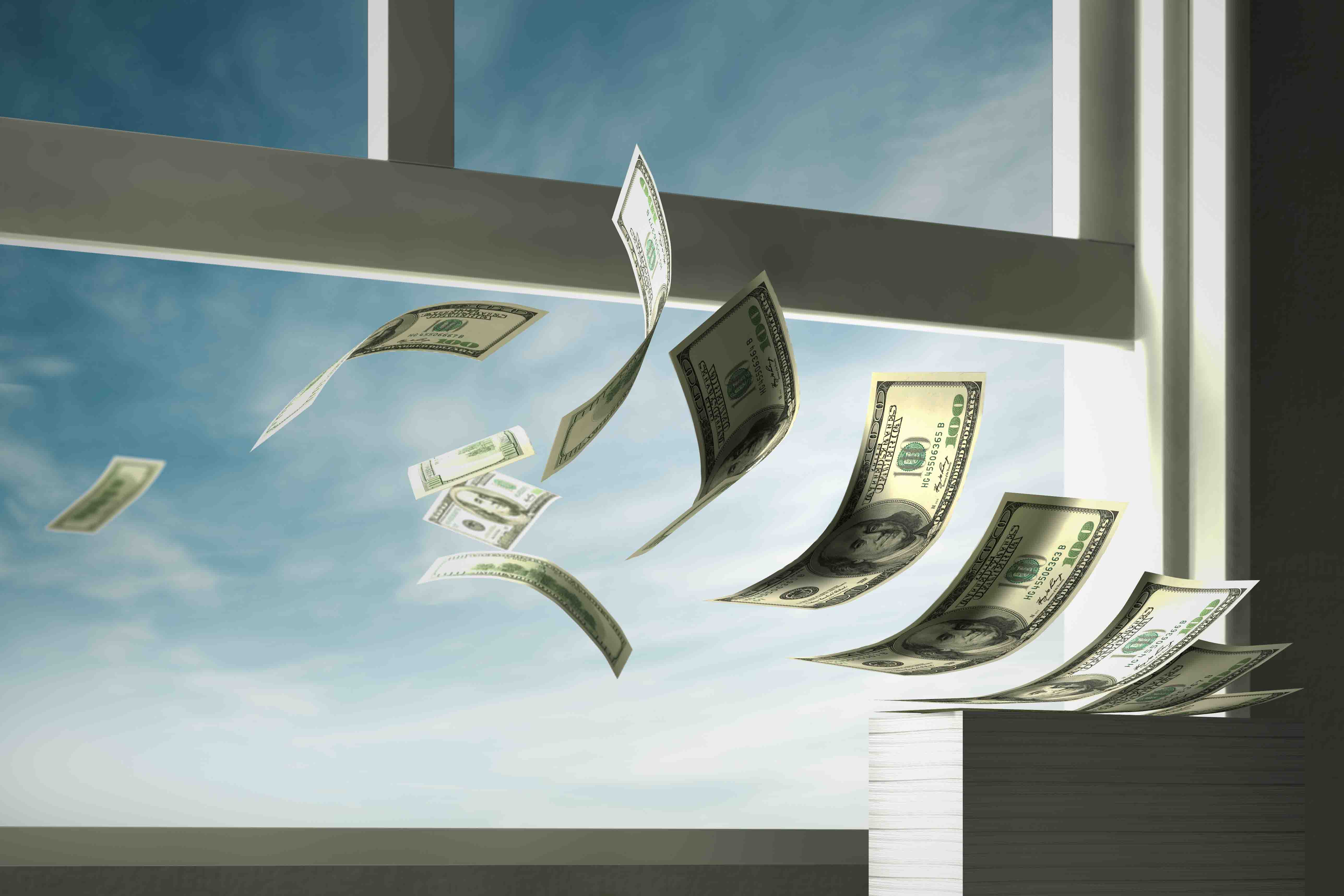3 Tips to Help You Navigate Open Enrollment in Your ‘New Normal’
With all the changes going on in workplaces across the country since COVID-19, your insurance and benefits needs might have changed, too.


Like many Americans, you’ve probably seen your finances impacted by the COVID-19 pandemic. Maybe you were one of the 40 million-plus people who found themselves or a partner unemployed or furloughed. Perhaps you couldn’t work because you were sick or taking care of a loved one or no longer had access to child care. Or maybe you were among the many Americans who were able to start working from home — and have saved money by not commuting, going out to lunch or paying dry-cleaning bills.
As you look ahead to your employer’s fall open enrollment season, your process for selecting benefits should reflect your “new normal” circumstances. After all, many aspects of your life may have changed, including household income or expenses, medical needs, child care and elder care arrangements or mental health needs. And any member of your household who lost their job may no longer have access to workplace benefits and will be more dependent on you.
Here are three tips to consider:

Sign up for Kiplinger’s Free E-Newsletters
Profit and prosper with the best of expert advice on investing, taxes, retirement, personal finance and more - straight to your e-mail.
Profit and prosper with the best of expert advice - straight to your e-mail.
1. Don’t let unexpected medical costs derail your financial well-being
Millions of Americans were directly impacted by a COVID-19 diagnosis, and millions more deferred basic medical care while sheltering at home. This may lead to higher-than-average medical costs in 2021, which means it will be important to select medical and dental insurance suited to your new circumstances. You may want to add coverage for a spouse, partner or child under the age of 26 if they are no longer employed, and enroll in a tax-advantaged health savings account or flexible spending account to save for out-of-pocket medical expenses. If eligible, consider HSAs over FSAs because they offer better tax benefits and can be rolled over for future years’ expenses.
If you anticipate higher out-of-pocket expenses due to higher insurance deductibles, consider reducing coverage gaps with critical illness, accident and hospital indemnity insurance. Also consider cost-effective new telemedicine offerings and education programs your employer may be offering.
2. Investigate ways to protect your income and manage caregiving expenses
According to the latest Financial Wellness CensusTM from Prudential, over one-quarter (26%) of Americans surveyed experienced an income disruption due to the COVID-19 pandemic, yet 74% were living paycheck to paycheck before it hit. Consider taking advantage of the following employee benefits to protect your income and better manage ongoing expenses:
- Disability income protection insures one of your most valuable assets: your ability to work and earn an income. This type of insurance can provide you with a predetermined level of income in the event you become unable to work due to illness or injury.
- Life insurance can provide income for your loved ones in the event of your premature death. You also may want to check whether your employer offers life insurance protection for your spouse or partner. Not sure this makes sense for you? Here’s an eye-opening statistic: The median age of COVID-19 sufferers in America is 48.
- Dependent care flexible spending accounts could be helpful if you expect to have young children home more often due to remote schooling, canceled camps or sports activities, or limited access to babysitting. Similarly, elder care referral services or backup elder care programs can help with managing care for aging loved ones and make it easier for you to continue working.
3. Think holistically about financial wellness during open enrollment
Many workplace benefits are overlooked because they are not part of the open enrollment process. Use this year’s open enrollment period to think holistically about all the benefits available to you through your workplace and how they can improve or safeguard your financial health. For example:
Re-evaluate how much you’re contributing to your 401(k) plan. If you’re still contributing at a level set years ago, conduct a personal financial checkup and consider whether you should increase the amount. It may be easier than you think. Americans working from home are expected to save, on average, $2,500 to $4,000 in expenses due to lower commuter and other work-related costs. Meanwhile, some may have benefited from stimulus checks and temporary relief on their debt. Consider placing any extra savings toward your 401(k) plan — at least enough to receive any employer matching contributions you may be missing.
Also consider paying some of your income taxes upfront by making Roth contributions to your 401(k) (if offered) rather than traditional contributions, especially if you think tax rates may be heading higher in the years ahead. Finally, if possible, make additional contributions toward important intermediate-term goals, such as funding an HSA or a 529 plan for a child’s education.
Enroll in a workplace emergency savings plan. Emergency savings are critical for navigating an unexpected job loss or slowdown, unpaid family medical leave or unexpected medical expense. A recent study found that the leading financial regret related to the pandemic was a lack of emergency savings. Some employers offer an emergency savings program that is “baked” into a 401(k) plan and allows you to set aside money on an after-tax basis through payroll deductions.
If your employer doesn’t offer an emergency savings program, you can request that a percentage or specific dollar amount be automatically deducted from your paycheck and placed into a savings or high-yield checking account that is earmarked for emergencies.
Opt in to your workplace financial wellness program. This program will likely include financial education and advice services and customizable financial planning, budgeting and debt-management tools, all of which can help you cope with changes in your financial situation. If applicable, check your employer’s student loan assistance program to evaluate your repayment period to potentially refinance in today’s low interest-rate environment, and to take advantage of any debt-repayment matching programs.
You may find the open enrollment process different this year, especially if you are working remotely. On-site meetings with benefit counselors may not be available, for example. Your employer may offer digital alternatives, including chatbots and remote Q&A sessions, in their place. Your employer also may now offer new or revised benefits worth considering in your new circumstances.
With more than half (51%) of Americans saying their financial health was negatively impacted amid the crisis, the fall open enrollment season is a good opportunity to ensure that your benefits reflect your new needs.
The information is not intended as investment advice and is not a recommendation about managing or investing your retirement savings. If you would like information about your particular investment needs, please contact a financial professional.
Get Kiplinger Today newsletter — free
Profit and prosper with the best of Kiplinger's advice on investing, taxes, retirement, personal finance and much more. Delivered daily. Enter your email in the box and click Sign Me Up.

Vishal Jain is the Head of Financial Wellness Strategy and Development for Prudential Financial. He is responsible for defining Prudential's financial wellness strategy and partnering with a wide range of stakeholders across Prudential in developing and delivering financial wellness capabilities and solutions to the market. For more information, please contact Vishal at vishal.jain@prudential.com.
-
 12 Investments No Retiree Should Make
12 Investments No Retiree Should MakeIn retirement, when it's wise to take fewer risks with your nest egg, some investments are just nuts.
By David Rodeck
-
 What the Capital One Discover Merger Means for Your Wallet
What the Capital One Discover Merger Means for Your WalletThe Capital One Discover merger reshapes the credit card landscape and could impact your credit card rewards, interest rates and card perks.
By Paige Cerulli
-
 Before You Invest Like a Politician, Consider This Dilemma
Before You Invest Like a Politician, Consider This DilemmaAs apps that track congressional stock trading become more popular, investors need to take into consideration some caveats.
By Ryan K. Snover, Investment Adviser Representative
-
 How to Put Together Your Personal Net Worth Statement
How to Put Together Your Personal Net Worth StatementNow that tax season is over for most of us, it's the perfect time to organize your assets and liabilities to assess your financial wellness.
By Denise McClain, JD, CPA
-
 Bouncing Back: New Tunes for Millennials Trying to Make It
Bouncing Back: New Tunes for Millennials Trying to Make ItAdele's mournful melodies kick off this generation's financial playlist, but with the right plan, Millennials can finish strong.
By Alvina Lo
-
 Early-Stage Startup Deals: How Do Convertible Notes Work?
Early-Stage Startup Deals: How Do Convertible Notes Work?Some angel investors support early startups by providing a loan in exchange for a convertible note, which includes annual interest and a maturity date.
By Murat Abdrakhmanov
-
 SRI Redefined: Going Beyond Socially Responsible Investing
SRI Redefined: Going Beyond Socially Responsible InvestingNow that climate change has progressed to a changed climate, sustainable investing needs to evolve to address new demands of resilience and innovation.
By Peter Krull, CSRIC®
-
 Here's When a Lack of Credit Card Debt Can Cause You Problems
Here's When a Lack of Credit Card Debt Can Cause You ProblemsUsually, getting a new credit card can be difficult if you have too much card debt, but this bank customer ran into an issue because he had no debt at all.
By H. Dennis Beaver, Esq.
-
 Going to College? How to Navigate the Financial Planning
Going to College? How to Navigate the Financial PlanningCollege decisions this year seem even more complex than usual, including determining whether a school is a 'financial fit.' Here's how to find your way.
By Chris Ebeling
-
 Financial Steps After a Loved One's Alzheimer's Diagnosis
Financial Steps After a Loved One's Alzheimer's DiagnosisIt's important to move fast on legal safeguards, estate planning and more while your loved one still has the capacity to make decisions.
By Thomas C. West, CLU®, ChFC®, AIF®